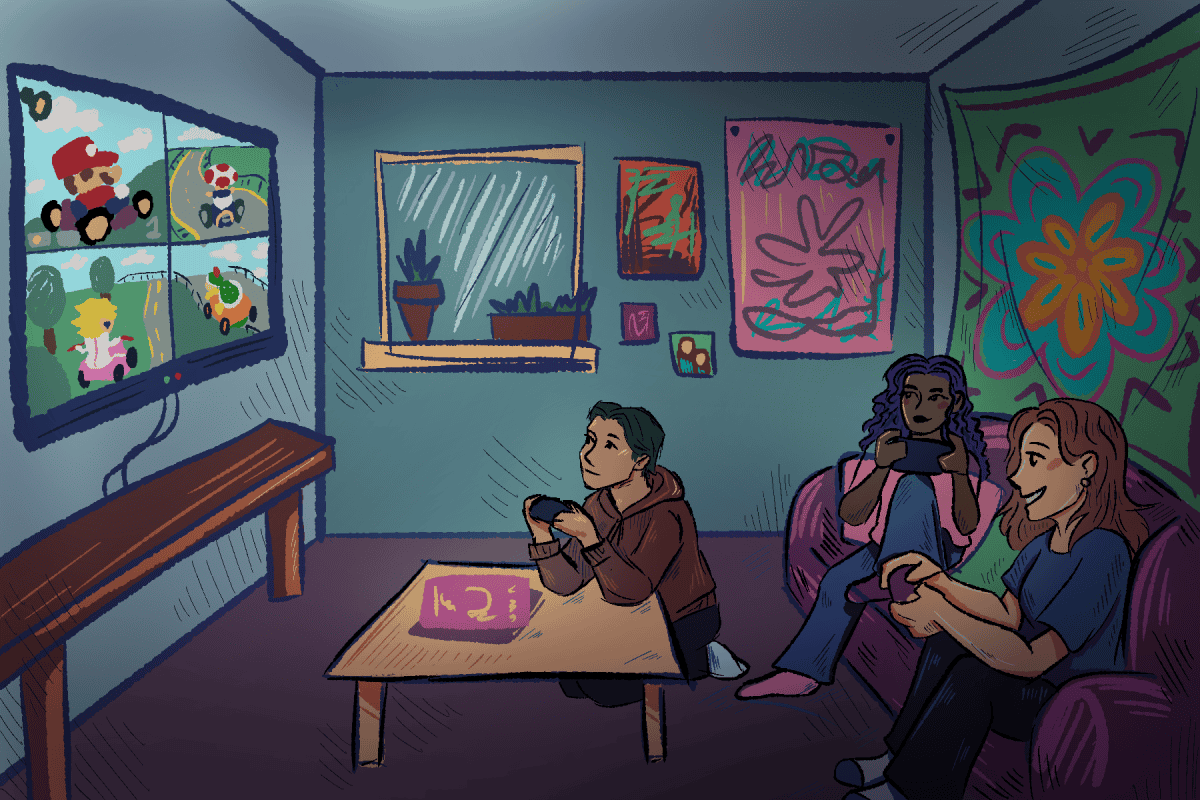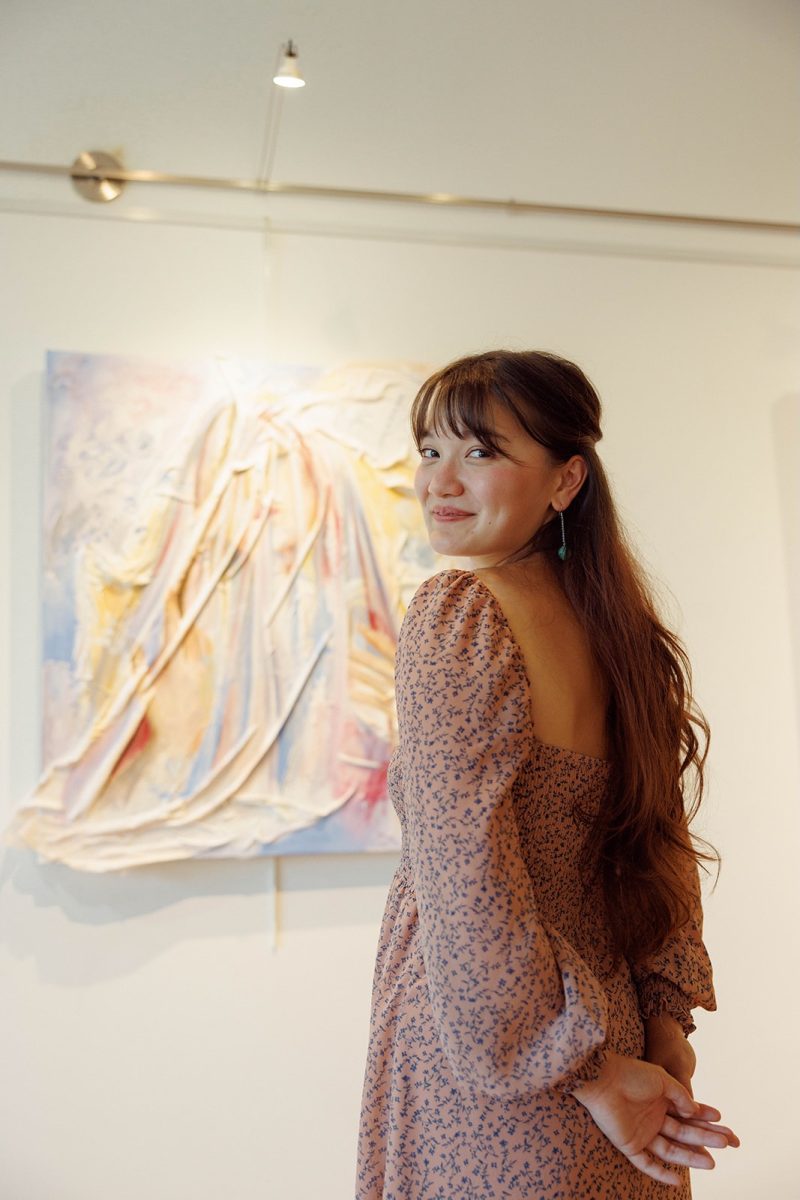After months of research, McNair scholar and art major Patricia Davis will show a series of mixed-media prints in the Ferguson Center Art Gallery.
The exhibit, titled “INVASION — Representations of Cancer: Combining Medical and Military Metaphors,” runs from Oct. 5 through Oct. 29 and is one of several components of Davis’s required research as a McNair Scholar.
Davis was one of 12 students selected to join the McNair Scholars Program last fall. The program, designed for first-generation or disadvantaged college students interested in going to graduate school, awards students a $2,800 research stipend, a $1,100 fellowship, fee waivers for graduate school admissions tests, a trip to California for the McNair research symposium and more.
“Students have so many opportunities with the McNair Scholars Program,” Davis said. “We work closely with faculty and graduate student mentors to come up with a research proposal, and we work closely with them to complete it. We’re offered advice about graduate school, and we’re more competitive applicants because we already understand academic research.”
Davis’s project examines the way we view cancer and the metaphors we use to describe it.
“The way we talk about cancer is very militaristic,” she said. “We’re afraid of it, but we romanticize it, too. We did it with tuberculosis before we found a cure for it. Susan Sontag’s essay ‘Illness is Metaphor’ discusses these metaphors.”
Just as people use conflicting metaphors for disease in our speech, so do Davis’s prints. By overlaying the prints with drawing and painting techniques, she admits that each one is colorful and beautiful in its own way, but the prints also represent different body systems with different cancers. Military planes, tanks and missiles, with all insignia removed, interrupt the superficial beauty. They represent the invasive aspect of cancer, she said.
Each print is a monotype print, meaning they cannot be reproduced, and each print has two numbers on it. The first represents the number of new cases of cancer that will develop by the end of the year; the second represents the number of people who will die of cancer by the end of the year.
Pointing to the print representing the respiratory system, located on the wall farthest from the entrance to the gallery, Davis said, “I see this one as the sort of focal piece for the entire collection. It was the hardest for me to make. My mom died of lung cancer in 2007.”
In this print, planes emerge out of the darkest spot of the lung, spilling out of the print and onto the wall.
When her mom was diagnosed with cancer, Davis said she kept asking herself, “What is this thing that everyone is so terrified of?” and she started researching cancer to understand what was happening to her mom.
“I’ve always been interested in medicine. My mom was a phlebotomist, and I actually came to Alabama thinking I would go into the medical field. Then I started taking art classes and fell in love with printmaking,” she said.
“I first started researching cancer as a coping mechanism, but with this project it’s grown to be so much more than that. I’ve turned my research and my art into something that’s not just personal to me. Other people can relate to it, too. Everyone knows someone who has cancer or who has died of cancer.”
With cancer prevalent in her family, Davis said her research has been a learning process and a way for her to conquer the disease.
“I don’t want to be afraid of this disease,” she said. “People don’t want to go to the doctor when they think something might be wrong, and they wait until it’s too late. Technology has come so far in recent years for that.”
At the exhibit’s opening reception on Thursday night, which starts at 7 and lasts until 8:30, Davis said she will be giving people cards so they can e-mail her and give her feedback about her artwork.
After the exhibit, Davis’ focus will be on writing the professional research article that will accompany her artwork. She hopes to have it published in the McNair Scholars Journal. By fall of 2011, Davis hopes to be working on her MFA in printmaking and continue the art that she has begun.






